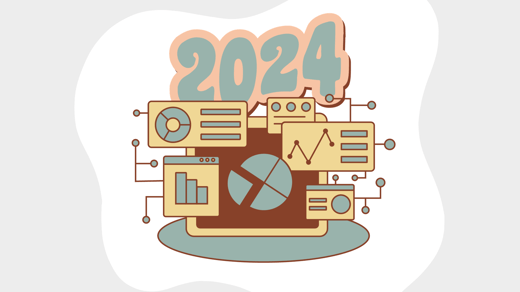AI is beginning to play a crucial role in how scientists think, experiment, and make sense of complex data. As AI interacts with traditional scientific processes, the scientific method most of us are familiar with is being challenged. Let’s explore the ways in which AI is giving the good old scientific method a modern makeover.
AI in Hypothesis Generation
Creating scientific hypotheses is no longer just a human endeavor. Traditionally, formulating a hypothesis was a mixture of educated guesses and past knowledge. Unlike humans, AI can sift through mountains of data and spot patterns we might miss. This, coupled with a lack of bias and human-error enables AI to suggest hypotheses that are anything but obvious.
Take genetics, for example. AI algorithms can analyze genetic data at a speed and scale unthinkable for human researchers. Because of this, AI might spot a peculiar gene behavior that leads to a groundbreaking hypothesis about a disease. Another example is climate science, where AI models predict future patterns based on vast historical data, offering hypotheses about climate change impacts that call on people to test.
This AI-driven approach doesn't replace human contributions; it enhances them. Within this step of the scientific method, AI essentially asks the scientist, “have you considered it from this angle?” AI opens the door to questions and possibilities that humans might not think to ask.
AI in Experimentation and Design
Now, let's shift gears to experimentation. Traditionally, designing and conducting experiments has been a hands-on, often labor-intensive process. But with AI platforms, we're entering an era where experiments can be smarter, more efficient, and more creative. AI doesn't just help in automating the mundane tasks; it's transforming how we approach experimental design itself.
AI algorithms have the capability of suggesting experimental setups that optimize resources and time, or even proposing alternative approaches that a human mind might overlook. In fields like pharmaceuticals, AI has the power to speed up drug discovery by predicting how different compounds might interact. And in physics, AI models help to simulate experiments that would be too costly or dangerous to conduct in real life.
AI doesn’t need sleep, it doesn’t get tired, and it can crunch numbers at an astonishing rate but AI’s role in science extends beyond computing. AI brings a level of creativity and insight into experimentation that is genuinely novel. Through thoughtful deployment of AI, researchers are empowered with tools to explore uncharted territories in science.
AI in Data Analysis and Interpretation
Moving on to data analysis – AI’s bread and butter. In today's science, we're drowning in data. There's more information than we can feasibly process, but AI can. AI’s data analysis capabilities are not just about handling large volumes of data; AI brings a level of sophistication to data interpretation that is quite transformative.
Think of AI as a master puzzle-solver. It can take disparate pieces of data, often too complex for human analysis, and fit them together to reveal new insights. In fields like astronomy, AI can sift through data from telescopes, helping us understand cosmic phenomena far beyond human reach. In biology, it can analyze patterns in DNA sequences, uncovering connections to diseases that were previously hidden.
AI is uncovering the stories hidden within the data. AI's ability to analyze and interpret complex datasets is not only making research more efficient but also more insightful. In the world of scientific research, AI is rapidly becoming an indispensable partner.
Challenges and Limitations
While AI's integration into the scientific method is a leap forward, it's not without its challenges and limitations. One major concern is the accuracy and bias in AI algorithms. Just like humans, AI can have blind spots, especially if trained on flawed or biased data. This can lead to misleading hypotheses or incorrect analysis, which is a big deal in scientific research.
Then there's the issue of replicability. In traditional science, experiments need to be repeatable to validate results. With AI's complex algorithms, replicating results can be tricky, raising questions about the reliability of AI-driven conclusions.
It's also vital to maintain a balance between AI assistance and human oversight. While AI can process and analyze data at an unprecedented scale, it lacks the nuanced understanding and ethical judgment that humans bring. This means scientists need to stay in the loop, critically evaluating AI-generated hypotheses and results, and ensuring that AI tools are used responsibly.
In short, AI in science is a powerful tool, but it's not a silver bullet. It requires careful handling and a clear understanding of its limitations to truly benefit scientific progress.
Conclusion
As we wrap up this exploration of AI's role in the scientific method, it's clear that we're witnessing a significant shift. AI is becoming a fundamental part of how we approach scientific inquiries. From generating hypotheses to designing experiments and analyzing complex data, AI is opening new frontiers in every field of science.
It’s important to remember that AI is a complement to, not a replacement for, human intellect and creativity. As we continue to harness AI's potential, the future of scientific discovery looks more promising than ever. Embracing AI in science means stepping into an era of enhanced exploration, discovery, and understanding.
To learn how to harness AI for your association, head to the Sidecar AI Learning Hub.

January 9, 2024


